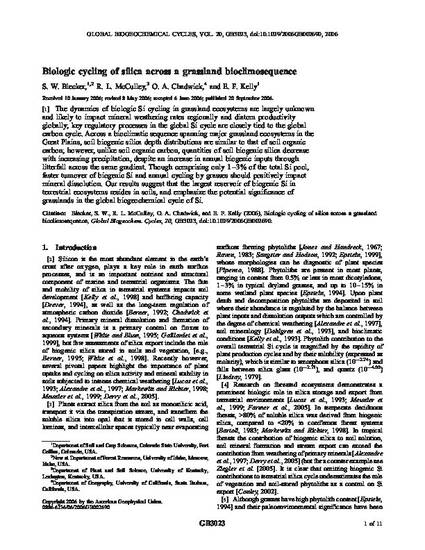
The dynamics of biologic Si cycling in grassland ecosystems are largely unknown and likely to impact mineral weathering rates regionally and diatom productivity globally; key regulatory processes in the global Si cycle are closely tied to the global carbon cycle. Across a bioclimatic sequence spanning major grassland ecosystems in the Great Plains, soil biogenic silica depth distributions are similar to that of soil organic carbon; however, unlike soil organic carbon, quantities of soil biogenic silica decrease with increasing precipitation, despite an increase in annual biogenic inputs through litterfall across the same gradient. Though comprising only 1–3% of the total Si pool, faster turnover of biogenic Si and annual cycling by grasses should positively impact mineral dissolution. Our results suggest that the largest reservoir of biogenic Si in terrestrial ecosystems resides in soils, and emphasize the potential significance of grasslands in the global biogeochemical cycle of Si.
Available at: http://works.bepress.com/rebecca_mcculley/18/

Published in Global Biogeochemical Cycles, v. 20, no. 3, article GB3023, p. 1-11.
Copyright 2006 by the American Geophysical Union.
The copyright holder has granted permission for posting the article here.